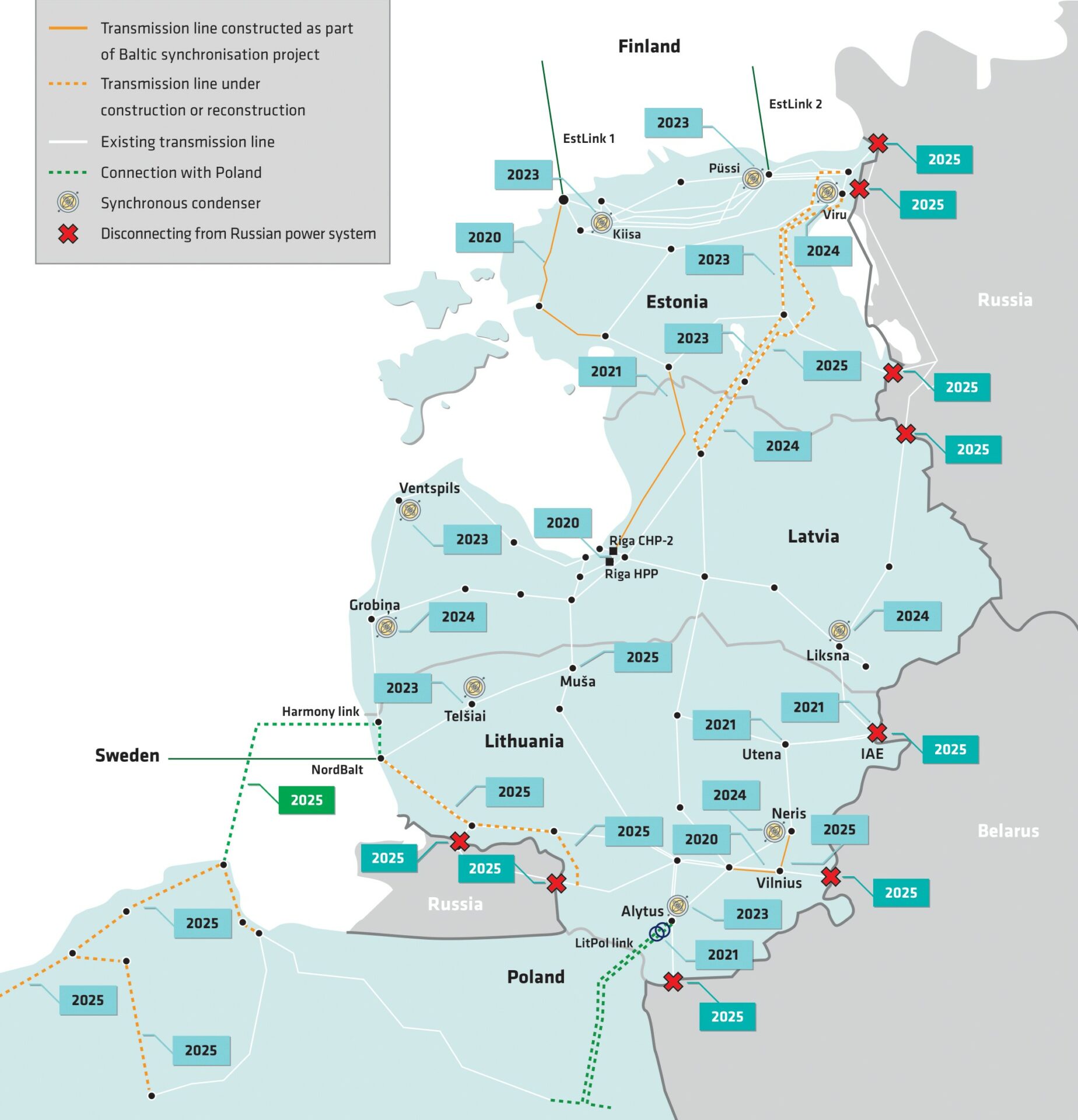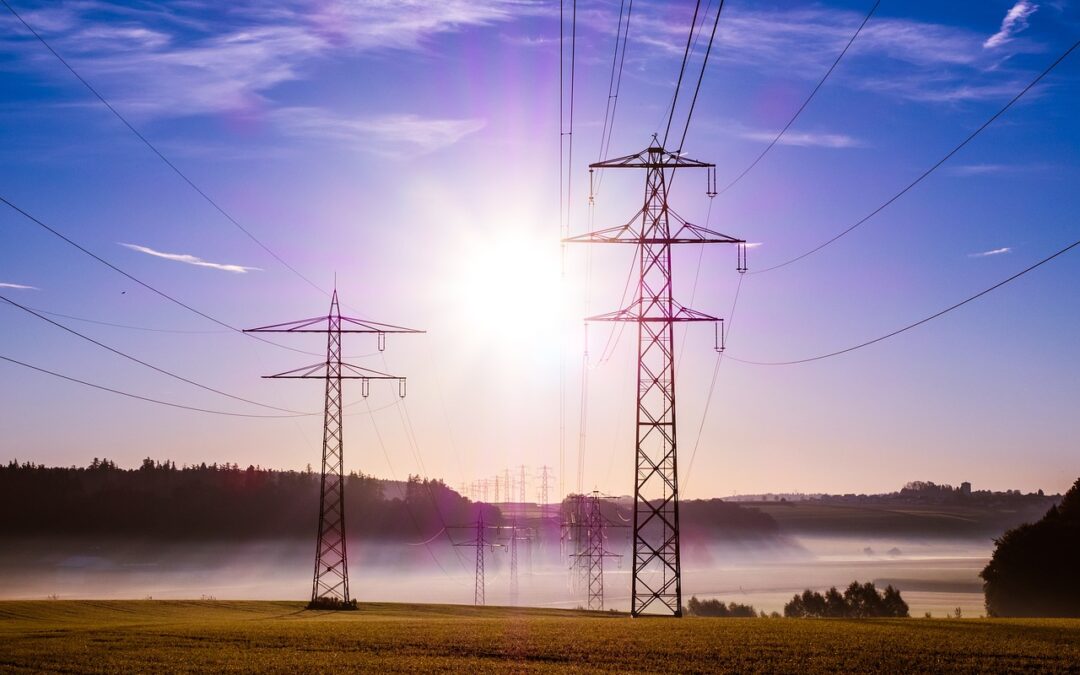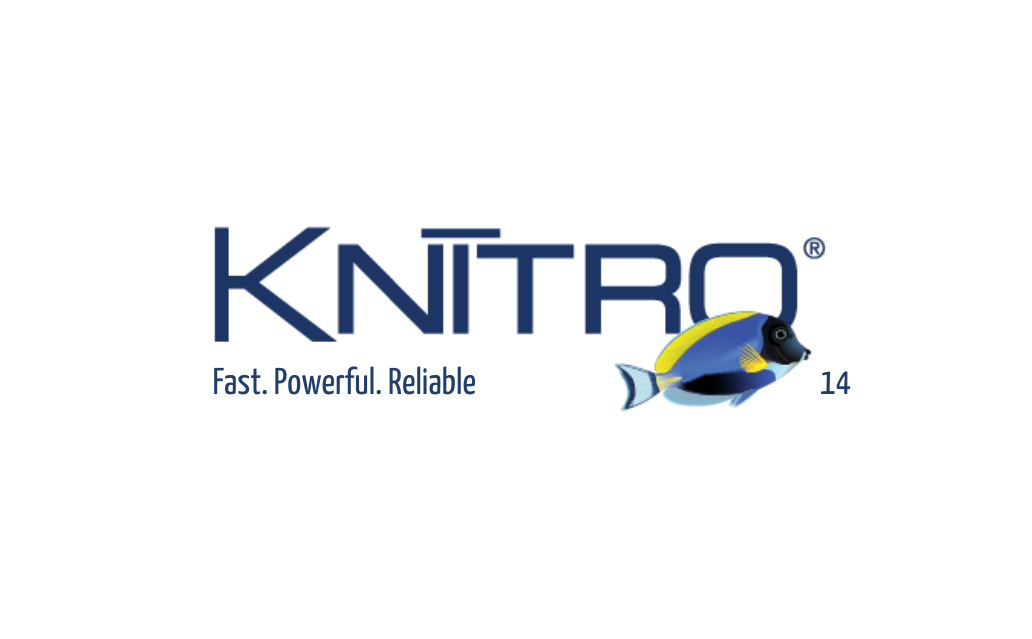Co-optimization study of baltic TSOs cross zonal capacity value between energy and balancing capacity markets
Over the past year, Artelys has provided the TSOs of Estonia, Latvia and Lithuania consulting services related to the use of electricity interconnection capacities to exchanges balancing capacity in addition to energy. Currently, the three baltic states depend on Belarus and Russia to balance their power systems and do not procure any balancing capacity locally.
Since 2007, the baltic states, their european neighbours and the European Union are actively working on synchronising the baltic electricity systems with those of continental Europe. One of the consequences of being synchronized with continental Europe is that the baltic states will need to establish an close cooperation in the balancing markets, in order to be able to compensate forecasting errors and outages, notably of interconnectors with Finland, Sweden and Poland.

Figure 1: Synchronization map. Source: AST.
Given the specificities of their systems, the baltic TSOs have elected to use a balancing reserve sharing approach within their Load-Frequency Control (LFC) block. In this way, the overall quantity of balancing capacity that has to be procured can be reduced compared to an approach based on a national dimensioning and procurement of balancing capacity per country. However, this also means that part of the interconnection capacity between baltic states will need to be allocated to the sharing of balancing reserves, effectively reducing the interconnection capacity available for the exchange of energy.
In this context, the baltic TSOs have commissioned Artelys to provide insights into questions focusing on the implementation of the market-based balancing capacity allocation process in the baltic LFC block, from the way to forecast the market value of cross-zonal capacity for the exchange of energy, to the evaluation of the optimal share of cross-zonal capacity to be allocated to the exchange of balancing capacity and to the exchange of energy.

Artelys provides support to the French energy regulatory authority (CRE) in assessing the adequate incentive levels to foster distribution networks performance for TURPE 7
Artelys has conducted a quantitative assessment to inform target levels proposals for TURPE 7, examining past performance and the impact of integrating smart meter data (Linky) into indicators measuring the quality of energy supply.

The MARI project is growing
In recent months, several new European TSOs have successfully joined MARI, the pan-European mFRR activation platform whose market clearing engine was developed by Artelys.

Knitro 14.2 solve your toughest nonlinear non-convex models in seconds
— We are pleased to announce that Artelys Knitro 14.0 is now available! This new version enables compagnies to solve complex non-linear optimization problems with unprecedented efficency and precision.

Artelys Powers the Launch of CorNet’s Common Grid Model (CGM) Service
Artelys has been selected to develop computation engine modules for the Common European Merging Function (EMF) used in the core of the CorNet program’s RCC Service Platform, enabling pan-European operational power grid coordination and security analysis.
subscribe to our newsletters
© ARTELYS • All rights reserved • Legal mentions